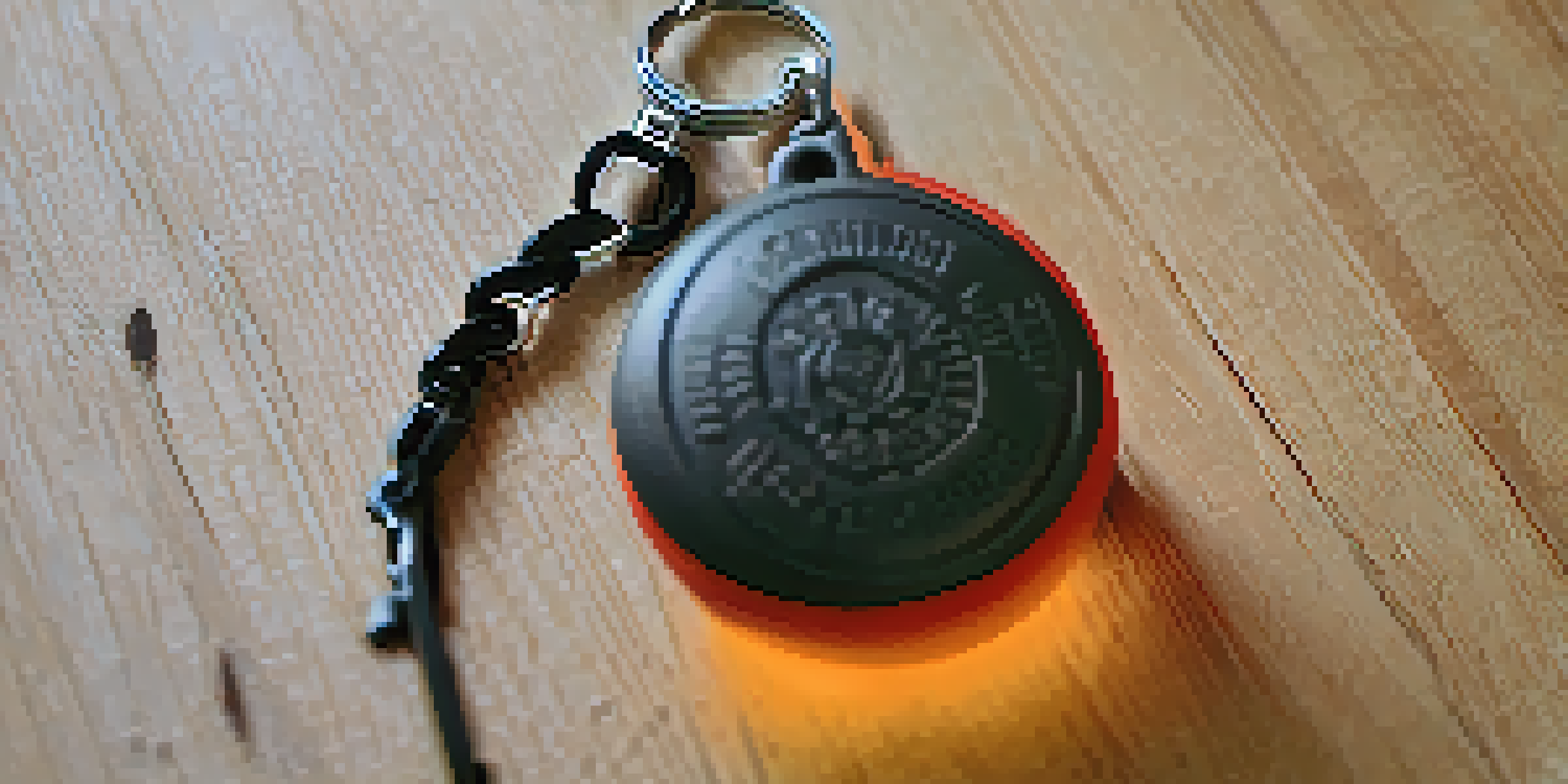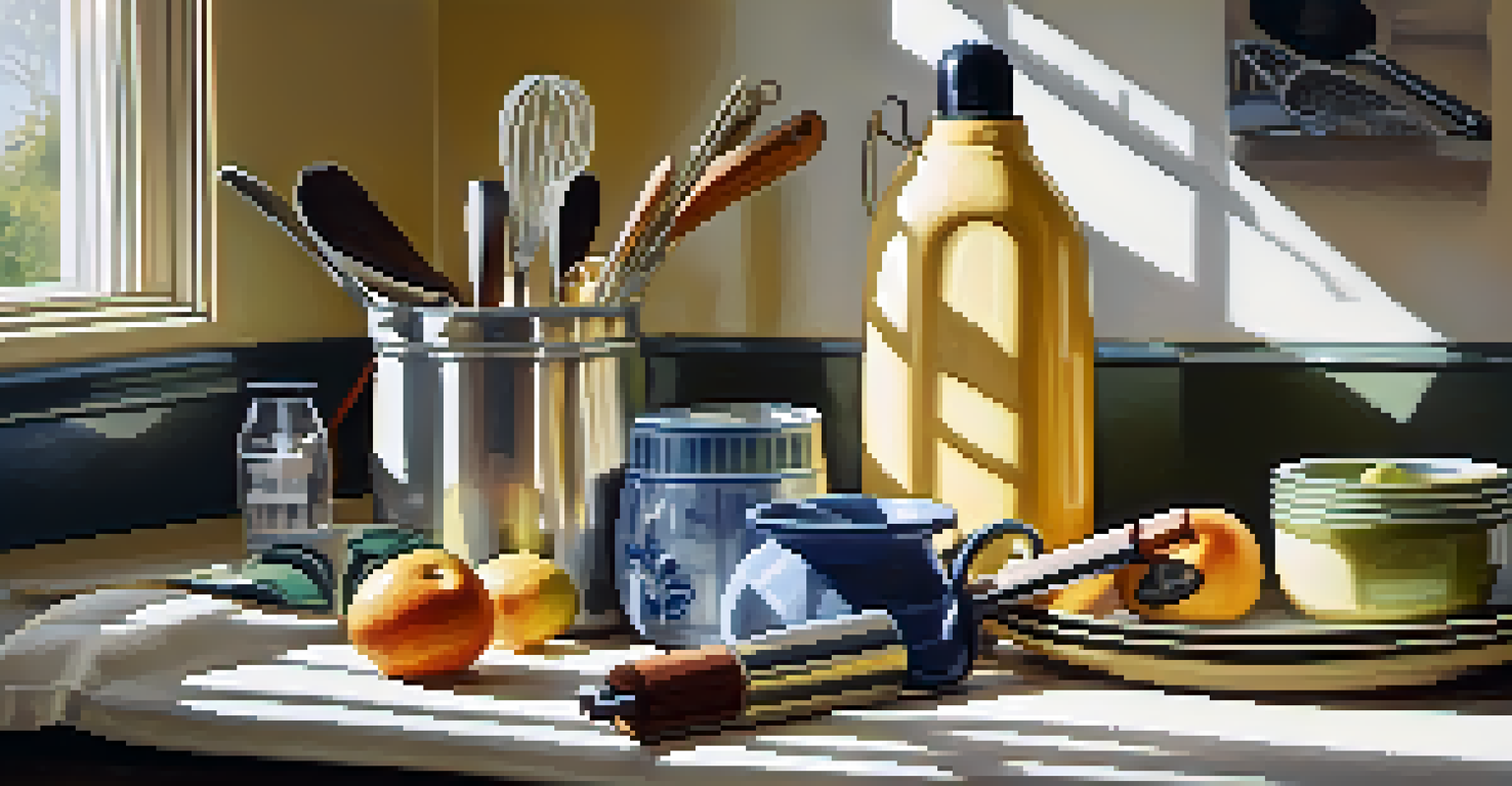DIY Self Defense Weapons: What You Can Make at Home

Understanding the Need for Self-Defense Tools
In today's world, personal safety has become a priority for many people. Whether you're walking home late at night or simply want to feel more secure in your own space, having a self-defense tool can provide peace of mind. It's essential to understand that self-defense isn't just about physical confrontation; it's about feeling empowered and prepared.
The best defense is a good offense.
While professional self-defense weapons are available, creating your own can be a cost-effective and satisfying option. Plus, DIY methods allow you to tailor your tools to your specific needs and preferences. This personal touch can enhance your confidence when using these tools.
Remember, the goal of self-defense is to deter potential threats and escape safely. By understanding the basics of self-defense tools, you can make informed choices about what works best for you and your situation.
Choosing Safe and Effective Materials
When it comes to crafting DIY self-defense weapons, the materials you choose are crucial. Look for items that are sturdy and can withstand pressure without breaking easily. Common household items like kitchen utensils, sports equipment, or even everyday objects can often be repurposed for self-defense.

For instance, a sturdy flashlight can serve as an excellent striking tool, while a rolled-up magazine can be used for defensive purposes. It's all about thinking creatively and recognizing the potential of items you already own. However, always prioritize safety; avoid materials that can cause harm to yourself or others.
Empower Yourself with DIY Tools
Creating your own self-defense tools not only saves money but also allows you to tailor them to your specific needs and enhance your confidence.
Before starting your project, consider the local laws regarding self-defense weapons. Ensuring your DIY tools are legal and safe to use will not only keep you out of trouble but will also help you focus on effectively using them.
Crafting a Simple Self-Defense Keychain
One of the most accessible DIY self-defense tools is a self-defense keychain. You can create one using materials like a hard rubber ball or a small piece of wood shaped into a knob. Attach it to your keyring, and it can be a discreet yet effective tool if you ever feel threatened.
Self-defense is not just a concept, it is an instinct.
Using this keychain in a self-defense situation is simple: hold it firmly in your hand and use it to strike an assailant. The compact size makes it easy to carry, and its everyday appearance can help it blend in. This way, you have a tool ready without drawing unnecessary attention.
Just remember, the effectiveness of this tool relies on your confidence and ability to use it. Practicing how to hold it and strike can make a significant difference in a stressful situation, enhancing your readiness.
Creating a Personal Alarm with Household Items
A loud noise can be a powerful deterrent against potential threats. You can easily create a personal alarm using items you likely already have at home. For example, a whistle or an old alarm clock can serve this purpose well.
If you have a whistle, attach it to your keychain or bag for easy access. In case of danger, blowing the whistle can alert others nearby, potentially scaring off an aggressor. An alarm clock, on the other hand, can be rigged to make noise when triggered, acting as an alarm system.
Utilize Common Items for Safety
Everyday objects like pens and umbrellas can be creatively repurposed into effective self-defense weapons to help protect yourself in emergencies.
By making noise, you not only draw attention to yourself but also disrupt the situation, giving you a chance to escape. Remember, the goal is to create tools that can help you feel safer and more secure in any environment.
Utilizing Everyday Items as Makeshift Weapons
Sometimes, the best self-defense tools are the ones you don’t even realize you have around the house. Everyday items like pens, umbrellas, and even bags can be transformed into effective self-defense weapons. For instance, a sturdy pen can be used to jab at an attacker, while a compact umbrella can provide both coverage and striking power.
The key is to think about how you can use these items creatively. An umbrella can be swung like a bat, while a bag can be used to block attacks or throw off an assailant’s balance. Just be sure to practice using these items to ensure you can react confidently if needed.
Always remember, the primary goal of using these makeshift weapons is to create an opportunity to escape. It's not about engaging in a fight but rather about protecting yourself and getting to safety.
Building a Homemade Pepper Spray Alternative
If you prefer a more traditional self-defense tool, consider making a homemade pepper spray alternative. You can create a non-toxic version using ingredients like vinegar and hot sauce. While this won’t have the same potency as commercial pepper spray, it can still provide a level of deterrence in an emergency.
To make your homemade spray, mix vinegar with a small amount of hot sauce in a spray bottle. Test it to ensure it sprays evenly and effectively. Keep in mind that while this alternative can help in a pinch, it's crucial to be cautious about using it, as it can also affect you if used improperly.
Practice Makes Preparedness
Practicing self-defense techniques with your DIY tools is essential for building confidence and ensuring you're ready to respond in a real threat situation.
Always prioritize your safety and avoid putting yourself in harm's way. If you choose to use any homemade deterrents, practice caution and be aware of your surroundings.
Practicing Self-Defense Techniques with Your Tools
Creating DIY self-defense weapons is just the first step; knowing how to use them effectively is crucial. Consider practicing techniques and scenarios where you might need to use your tools. This practice can help build confidence and muscle memory, ensuring you know how to react when it matters most.
You can practice in a safe environment, perhaps with friends or family, to simulate real-life situations. Role-playing different scenarios can also help you anticipate various threats and prepare your responses. The more familiar you are with your tools, the more empowered you will feel.

Remember, self-defense is about preparedness and awareness. The combination of your DIY tools and practiced techniques can help you navigate potentially dangerous situations with confidence.